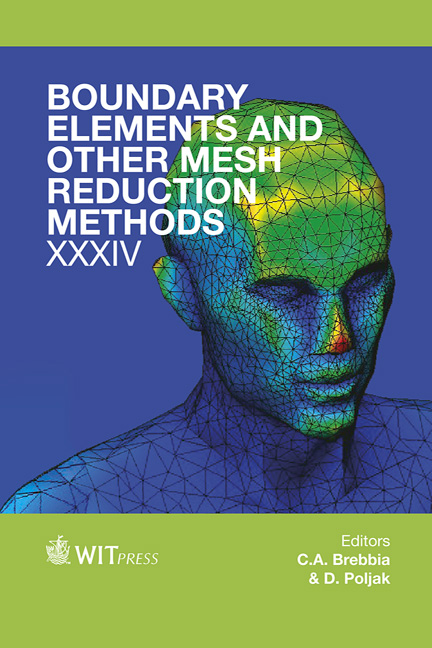The Adaptive Cross Approximation Accelerated Boundary Element Method For Bubble Dynamics
Price
Free (open access)
Transaction
Volume
53
Pages
11
Page Range
209 - 219
Published
2012
Size
1,237 kb
Paper DOI
10.2495/BE120191
Copyright
WIT Press
Author(s)
Z. Fu & V. Popov
Abstract
A model based on the adaptive cross approximation (ACA) accelerated boundary element method (BEM) is presented for solving bubble dynamics problems. The computational solution of multiple bubble dynamics problems has high CPU requirements since it involves moving gas–liquid phase interfaces. In order to efficiently solve such problems, a fast algorithm, i.e. adaptive cross approximation, is implemented to compress the induced collocation matrix. An efficient binary-bit key system is applied to build up a hierarchical tree structure for the discretized boundary. With the aid of the key system, the dense matrix is partitioned into blocks which satisfy the condition of admissibility or contain only one row/column. The implemented ACA-BEM numerical technique is verified using the Rayleigh-Plesset equation and it is shown to be of linear complexity. Keywords: bubble dynamics, boundary element method, adaptive cross approximation. 1 Introduction Among all the numerical techniques, the Boundary Element Method (BEM) has been particularly favoured for study of bubble dynamics. Analysis of bubble evolution involves a geometrical change of bubble surface and transition of the bubble; hence it can be represented as a moving boundary problem. The use of the BEM allows for discretization of the bubble surface only, which significantly simplifies the re-meshing process and therefore has been widely employed by many researchers for the solution of this problem (e.g. Blake et al. [1], Chahine [2], and Khoo et al. [3]).
Keywords
bubble dynamics, boundary element method, adaptive cross approximation.





